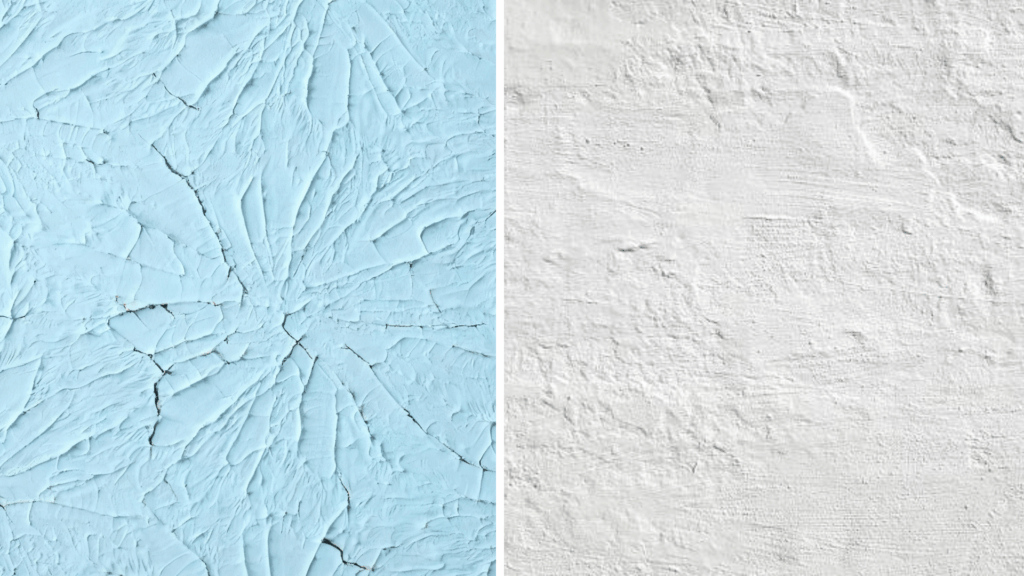Understanding the difference between drywall vs plaster is essential for homeowners planning home renovations or repairs.
If you’ve purchased a home with mysterious wall compositions or you’re trying to hang artwork safely, identifying your wall type affects everything.
While drywall has dominated residential construction since the 1950s, many homes built before this period feature traditional plaster walls that offer unique characteristics and challenges.
In this blog, you will learn the drywall vs plaster differences thoroughly, helping you identify which material covers your walls and understand the implications of it.
What is Drywall vs Plaster Walls?
Drywall and plaster are two common wall finishes used in homes, each offering distinct construction methods and results.
Drywall, also known as gypsum board, comes in large prefabricated sheets that are fastened to wall studs and finished with joint tape and compound.
It installs quickly, provides a smooth, modern look, and is widely used in new builds and remodels because it’s affordable, lightweight, and easy to repair.
Plaster walls, by contrast, are created by applying multiple layers of wet plaster over wooden or metal lath. This method produces a harder, denser surface with excellent sound insulation.
Plaster is often found in older or high-end homes where craftsmanship and texture matter. While drywall offers speed and cost efficiency, plaster provides strength, character, and a premium feel.
Key Differences Between Drywall vs Plaster

Before deciding which wall material fits your home, it’s important to know how drywall and plaster differ.
1. Installation Method
Drywall involves screwing or nailing large pre-manufactured gypsum panels directly onto wall studs, then taping and mudding seams for a smooth finish.
Plaster requires applying multiple wet layers over wood or metal lath in a labor-intensive process.
Drywall installation is straightforward and DIY-friendly, while plaster demands specialized skills, proper mixing ratios, and precise application techniques developed through years of training and experience.
2. Speed of Construction
Drywall installation moves quickly, and a standard room can be completed in one to three days, including finishing work.
The panels go up rapidly, with drying time between coats being delayed. Plaster installation extends over weeks, requiring multiple coats with substantial drying time between each layer.
The base coat, brown coat, and finish coat each need proper curing before proceeding, making plaster impractical for projects with tight deadlines.
3. Durability
Plaster walls are exceptionally durable, resisting dents, scratches, and impacts far better than drywall.
Properly maintained plaster lasts 70-100+ years, as evidenced by century-old homes with original walls. Drywall dents easily from impacts, though it’s simpler to repair.
Plaster’s hardened surface withstands wear better, but catastrophic damage requires extensive professional repair. Drywall’s softer composition makes it more vulnerable but easier to patch.
4. Soundproofing
Plaster provides superior sound insulation due to its density and mass, effectively blocking noise transmission between rooms. The thick, solid composition dampens sound waves than drywall.
Multiple plaster coats create barriers that minimize noise transfer. Standard drywall offers minimal soundproofing, though specialized drywall or additional insulation improves performance.
For optimal sound control in recording studios, home theaters, or shared walls, plaster or enhanced drywall systems prove most effective.
5. Aesthetic Possibilities
Plaster offers limitless texture options from smooth Venetian finishes to rustic hand-troweled surfaces, curved walls, and intricate decorative details.
Skilled plasterers create custom textures impossible with drywall. The material flows smoothly around curves and architectural elements.
Drywall provides clean, flat surfaces ideal for paint. While textures can be added through compounds or skim coating, drywall lacks plaster’s organic, hand-crafted character and architectural flexibility for curves.
6. Cost
Drywall is significantly more affordable, costing $1.50-$3.00 per square foot installed for standard applications. Materials are inexpensive, and labor is readily available.
Plaster costs $5-$15+ per square foot due to specialized labor, multiple application stages, and extended timelines.
The skilled craftsmanship required commands premium rates. Budget-conscious projects typically choose drywall; luxury renovations and restorations justify plaster’s premium pricing.
Maintenance & Repair Considerations
Below is a quick side-by-side comparison of maintenance and repair differences between drywall and plaster:
| Factor | Drywall | Plaster |
|---|---|---|
| Ease of Repair | Easy, DIY-friendly | Harder, it needs skilled labor |
| Repair Cost | Low | Higher |
| Repair Time | Fast drying | Slower, multi-coat |
| Damage Issues | Dents and holes are common | Strong but may crack over time |
| Tools Needed | Basic tools | Specialized tools |
| Texture Matching | Simple for smooth walls | Difficult for older/custom finishes |
| Maintenance | Occasional patching | Durable, fewer repairs, but more complex |
Common Mistakes to Avoid
Below are the common drywall and plaster mistakes you should avoid for better results.
- Skipping a Proper Wall Assessment: Many assume walls are drywall when they’re actually plaster (or vice versa), leading to wrong materials and techniques.
- Using the Wrong Repair Method: Applying drywall compound on plaster cracks or plaster on drywall seams creates weak, short-lived repairs.
- Ignoring Structural Issues Before Repairing: Fixing cracks or holes without checking for moisture, settling, or lath deterioration can lead to recurring damage.
- Poor Surface Preparation: Failing to clean, sand, or apply bonding agents results in peeling patches and uneven finishes.
- Choosing Based on Cost Alone: Picking drywall only because it’s cheaper or plaster only for durability can lead to mismatched aesthetics or performance issues.
- Using Incompatible Fasteners or Tools: The wrong screws, knives, or trowels can crack plaster or damage drywall, making repairs more difficult.
Conclusion
The drywall vs plaster debate ultimately comes down to understanding your specific home’s construction, project requirements, and long-term goals.
Remember that neither option is universally superior; the “best” choice depends on your budget, timeline, desired aesthetics, and the age of your home.
If you’re preserving historic plaster walls or working with modern drywall, respecting each material’s unique properties ensures successful outcomes.
Still unsure? Get your walls professionally assessed before beginning any of the major renovations!

